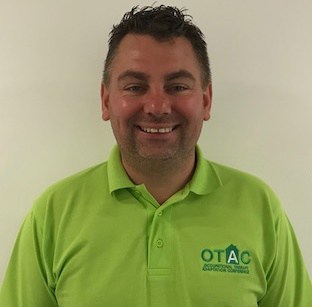The OT’s Perspective: What the heck is AAC?!

Stuart Barrow looks at how Augmentative and Alternative Communication can change lives for the better and how to interact with customers who may have communication difficulties.
First things first, what is AAC?
AAC is an umbrella term used to describe communication methods that aid communication when problems arise with ordinary speech.
Working in the industry, there is a good chance that you may come across a client whose speech is difficult for you to understand.
Equally, you may not be entirely sure whether or not they can understand what you’re saying.
There are multiple possibilities as to why this is the case – language, speech or communication difficulties due to conditions such as strokes, Motor Neuron Disease (MND), learning disabilities or brain injuries.
Important to note is that communication difficulties that are as a result of not sharing a client’s first language or as a result of deafness are not included under AAC – interpreters and the Royal National Institute for Deaf People can help in these cases.
What types of AAC are there?
No-tech-communication or ‘unaided communication’
Examples of this type of AAC include body language, gestures, pointing, eye pointing, facial expressions, vocalisations and signing
Low-tech or ‘aided’ communication systems (often referred to as not battery or electric operated)
Examples include pen and paper to write messages or draw, alphabet and word boards, communication charts or books with pictures, photos, symbols and particular objects used to stand for what the person needs to understand or say
High-tech communication systems (these need power from a battery or mains and most of them speak and/or produce text)
They range from simple buttons or pages that speak when touched to very sophisticated electronic systems. Some high-tech communication systems are based on familiar equipment such as mobile devices, tablets and laptops, whilst others use equipment specially designed to support communication. These are also sometimes referred to as “aided.”
Things to bear in mind when using AAC:
- Conversations take longer. If an appointment has been booked, double the appointment time or split the appointment into two appointments
- Deal with one question at a time, waiting before any answer before initiating further conversation
- Eye contact is key – facial expressions and our lips aid communication
- Speak directly to the client, even if they are with someone
- Don’t try and guess. If you didn’t understand, ask again. If all other methods of communication have failed and the need means the appointment cannot be rescheduled, then consider asking someone close to the client to interpret
- Avoid jargon
- Try pictures or props
What about clients with little to no speech?
- Stick to questions with ‘yes’ or ‘no’ answers
- If your client can’t indicate ‘yes’ or ‘no’, then find another way for them to communicate it and agree on it with them i.e. blinking or nodding
- If a person can write, they may be able to use a pen and paper to communicate
- If the person can spell but is physically unable to write, then you could use an ‘alphabet chart’. Write the letters of the alphabet on a piece of paper and ask the patient to spell out what they are saying by pointing to the letters.
- If the patient cannot point to the letters on the alphabet board, you can point to letters in sequence, asking him/her to indicate when you reach the desired letter – you can use a pad to keep track
- If the patient has a communication aid, encourage them to use it
I hope this helps – any more questions, just email me at stuart@promoting-independence.co.uk

Stuart Barrow of Promoting Independence is a member of the British Association of Occupational Therapists panel and a recognised contributor in the field of home adaptations. His experience is sought by manufacturers and service providers looking for an expert opinion. He also runs the Occupational Therapy Adaptations Conference
Check out more OT’s Perspectives here for expert advice and insights


